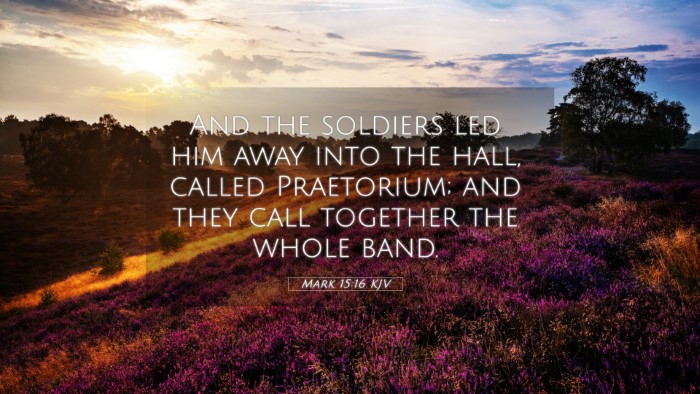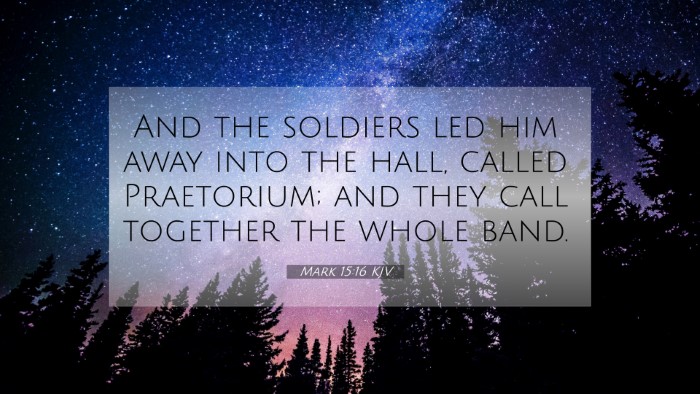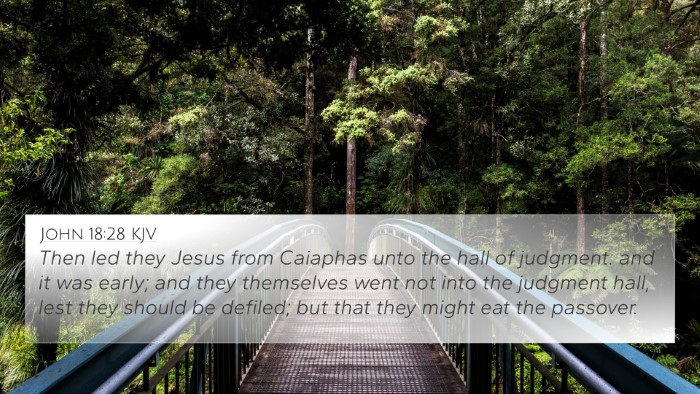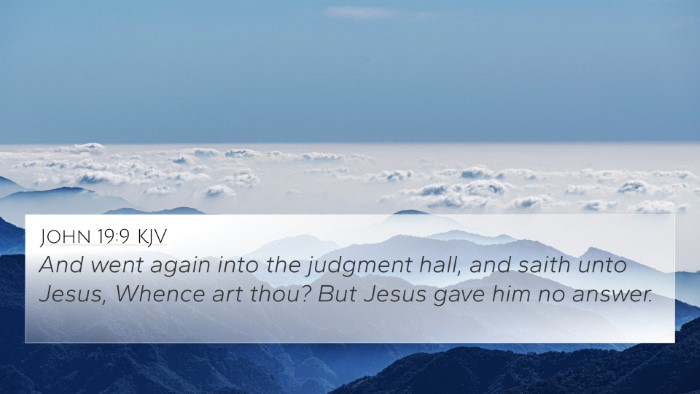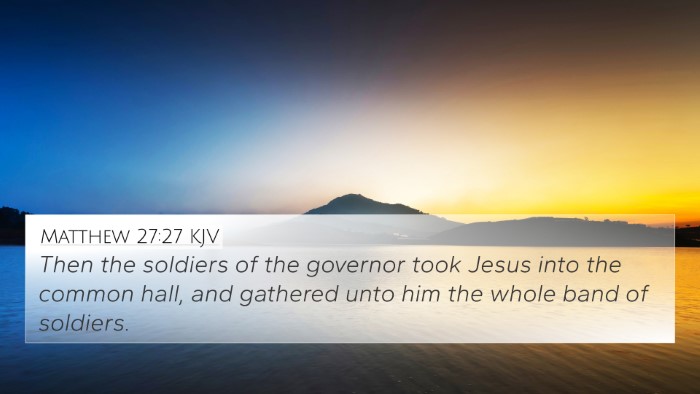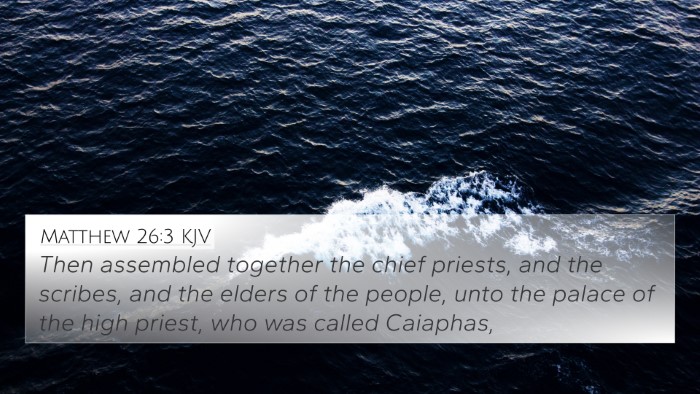Understanding Mark 15:16
Mark 15:16 states: "And the soldiers led him away into the hall, called Praetorium; and they called together the whole band."
This verse marks a significant moment in the narrative of the Passion of Christ, demonstrating the extent of Christ's humiliation and the brutality he faced at the hands of the Roman soldiers.
Commentary Insights
The following insight consolidates perspectives from various public domain commentaries:
Matthew Henry's Commentary
Matthew Henry emphasizes the mockery and shame faced by Jesus during this phase of his trial. The soldiers' action of gathering the whole cohort symbolizes the public nature of the derision he endured. The Pretorium, or official residence of the governor, reflects the authority and cruelty of Roman power. Henry notes that even in his suffering, Jesus remains the sovereign; he submits willingly to demonstrate his love and obedience to the Father.
Albert Barnes' Commentary
Albert Barnes elaborates on the significance of the Praetorium, noting it as a central location that highlights the political and military context of Jesus’s trial. He points out that the soldiers’ gathering of the entire band underscores the collective mockery of Jesus, illustrating how widespread the derision and scorn were against him. Barnes suggests that this moment sets the stage for the events that follow and is reflective of the prophecy outlined in Isaiah about the suffering servant.
Adam Clarke's Commentary
Adam Clarke provides additional context on the Roman soldiers' actions, explaining that such mockery was not uncommon in Roman punitive practices. Clarke highlights the military environment, where ridicule could be expected, and indicates that the soldiers may have seen the situation as an opportunity for entertainment at the expense of Jesus’s dignity. This scene resonates with the themes of rejection and suffering that are prevalent throughout the gospel narratives.
Bible Cross-References
Mark 15:16 can be linked to several other biblical passages that offer a broader understanding of its themes:
- Matthew 27:27-30: Describes the soldiers mocking and beating Jesus.
- John 19:2-3: Further discusses the mocking and crown of thorns placed on Jesus’s head.
- Isaiah 53:3: Prophesies the despised and rejected nature of the Messiah.
- Psalm 22:7-8: Echoes the ridicule faced by the one who is suffering.
- Luke 22:63-65: Mentions how the men who held Jesus mocked him.
- Romans 15:3: Highlights the notion of Christ bearing reproach for others.
- 1 Peter 2:23: Discusses how Jesus did not retaliate amidst his sufferings.
- Hebrews 12:2: Reminds believers to look to Jesus, who endured the cross and its shame.
- Philippians 2:8: States Jesus's humility, being obedient to the point of death.
- Luke 23:36-37: Describes the soldiers' mockery of Jesus as the King of the Jews.
Thematic Connections
This verse connects deeply with various themes throughout the Bible, particularly those dealing with suffering, rejection, and the fulfillment of prophecy. Analyzing these connections through a biblical cross-reference system reveals profound insights:
- Themes of Suffering: The suffering servant motif is strongly developed in Isaiah, continuing through to the New Testament depiction of Jesus.
- Public Humiliation: The ridicule of Jesus is a direct reflection of a larger pattern where God’s messengers face scorn.
- Rejection of the Messiah: The hostility faced by Jesus fulfills Old Testament prophecies concerning the Messianic expectation.
- Authority and Power Dynamics: The conflict between divine authority exemplified in Jesus and the earthly authority represented by the Roman soldiers.
- Obedience and Submission: Jesus's acceptance of his fate showcases profound obedience unto death.
Practical Application
For those studying the Bible, understanding Mark 15:16 not only enriches comprehension of this pivotal moment but also encourages believers to reflect on themes of suffering, humility, and faithfulness. Here are a few practical methods for engaging this scripture:
- Cross-Reference Bible Study: Use a Bible concordance to explore related scriptures that deepen understanding of the sufferings of Christ.
- Bible Chain References: Create links between this verse and others that depict the fulfillment of the prophecy.
- Thematic Analysis: Identify and study the common themes across passages that discuss mockery, suffering, and authority.
- Comparative Bible Study: Engage in a comparative study of the Gospel accounts to see how each writer presents this moment.
- Discussion Groups: Participate in group studies to discuss insights and connections among peers.
Conclusion
Mark 15:16 serves as a powerful anchor in the narrative of Jesus's crucifixion, revealing deep layers of experience, prophecy, and fulfillment. The interpretations from various scholars provide a rich tapestry of understanding and invite further exploration into the tools available for cross-referencing and thematic study. Through the connections made in both the Old and New Testaments, believers can gain a fuller appreciation of the sacrifice made on behalf of humanity.

